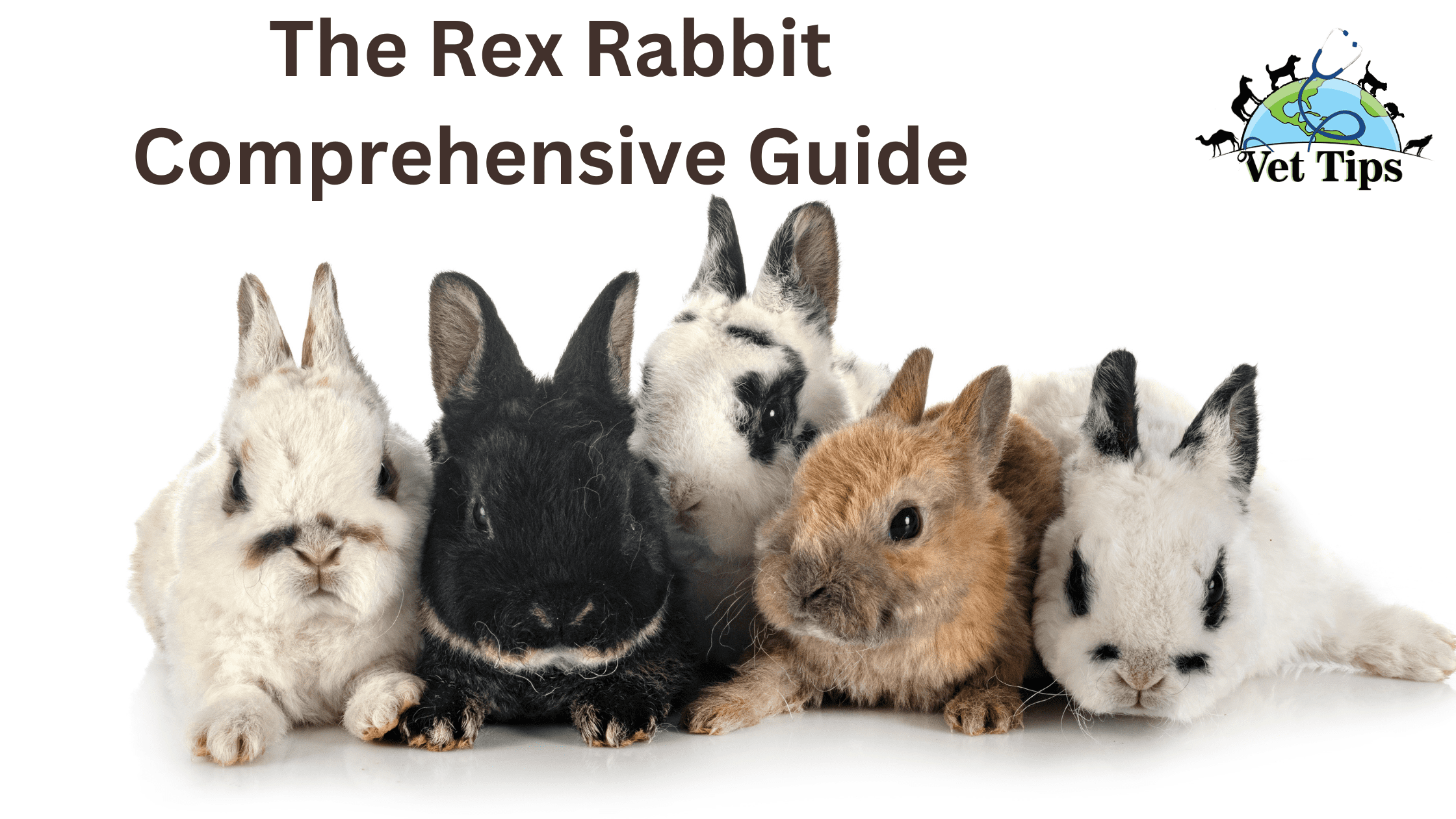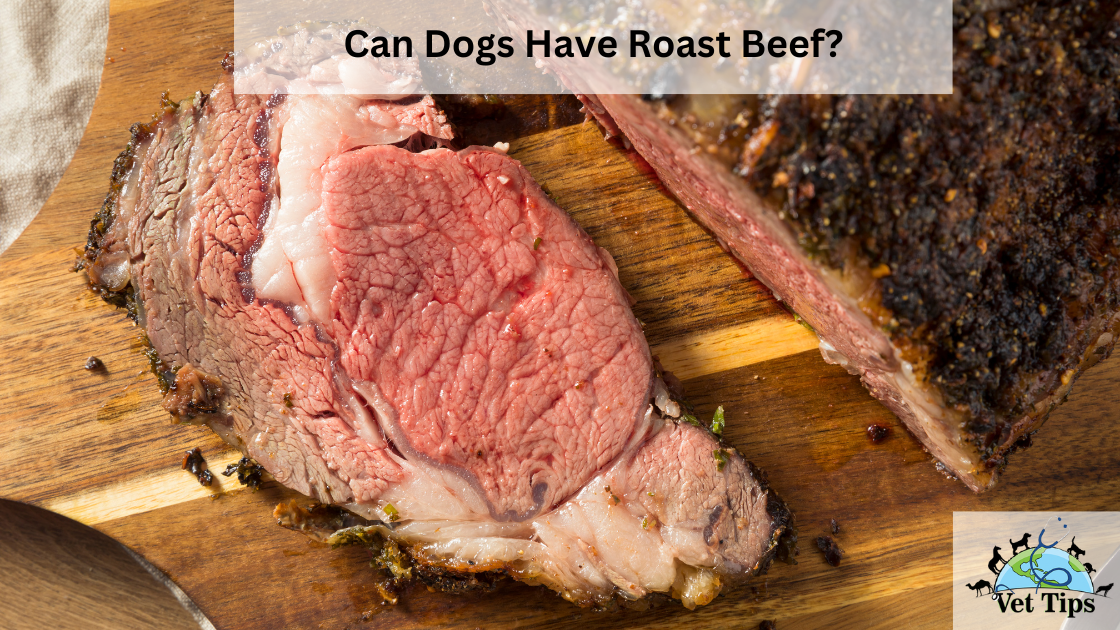“The Rex Rabbit Comprehensive Guide” is one of our favorite and most awaited topics to discuss. In this post, we will discuss all about Rex Rabbits, their types, eating habits, mating behavior, living conditions, and diseases associated with them.
Let’s Begin…
The Rex Rabbit Comprehensive Guide
Rex rabbits are one of the most famous breeds in the world and for a good reason. They are known for their soft fur, gentle demeanor, and large litter. But what many people don’t realize is that they aren’t just a pet – they make great livestock as well! We’ll cover everything from caring for them to breeding your own rex rabbit babies in this guide.
What is a Rex rabbit?
Rex is a medium-sized rabbit with a calm and lively attitude that makes him the best option for people of all ages and settings. It also has a high level of intelligence and is quite gentle. However, what separates this rabbit from the rest is the velvety texture of the fur.
It has short, soft fur that tips outwards, giving it a luxurious feel to the touch. When it comes to handlers and pet owners, this dog is quite friendly. Because of its massive size, Rex falls within the commercial classification. It is a common breed that may be found in the majority of commercial breeders.
What is special about rex fur rabbits?
The Rex Rabbit possesses a one-of-a-kind gene that imparts a velvety quality to its fur. The fur is incredibly dense, and the length and quality of the hair are consistent throughout the animal’s body. Generally, hairs are short but not less than half an inch in length, and they are not greater than 7/8 of an inch in length. As is the case with most rabbits, this breed’s short, silky fur that points out rather than against their bodies makes them feel highly fluffy.
Do rex rabbits make good pets?
Rex rabbits are usually gentle bunnies who don’t mind being picked up and stroked, notably if they’re being handled by a family who allows them to go out of their cage regularly to investigate their surroundings. Like any domesticated animal, it will develop a solid attachment to the family member who spends the most time with these cute rabbits and feeds them regularly. Still, it will be fearful of anybody who picked them up gently and petted them initially.
Their low maintenance needs make them ideal pets for the elderly and first-time pet parents and singles and couples who wish to give pet owners a try for the first time. As a delicate animal that needs extra care than cats or dogs, this rabbit breed is appropriate for youngsters as long as they learn how to pick up and care for rabbits.
Each rex rabbit has its own personality and may like chewing on and entertaining itself with various toys in terms of toys. It may be anything as essential as a toilet paper roll or as complex as a pet toy purchased from your local pet shop.
Do rex rabbits like to be held?
In addition to enjoying being picked up and caressed by its human partners, this sociable rabbit breed will grow devoted to its family if kept as a household pet. They are clever and maybe playful at times, but they will always allow you to pay them attention and offer them affection.
How do I know if I have a Rex rabbit?
Weight, color, coat texture, and length are some of the gross exterior characteristics used to identify the rabbit. According to fur fanciers and the fur business, the coat qualities are the most important of these characteristics. This breed has low to moderate energy and can leap as high as three feet in the air.
Where does a black Rex Rabbit live?
The breed was first seen in France in 1919 and has been around since. Its origins may be traced back to a litter of wild grey rabbits, and fanciers and the fur business have since refined it through the years. A standard breed in parts of Europe since 1925, the Black Rex rabbit was first exhibited publicly in 1924 at the Paris International Rabbit Show. It has been recognized as a standard breed in other areas of Europe since 1925.
What are rex rabbits used for?
Typically, the Rex rabbit is kept primarily for show purposes or as a companion animal. Some individuals also grow the Rex breed to produce fur and meat. For fur production, the American Chinchilla rabbit and the Standard Rex rabbit are two of the most popular species to choose from.
Types of Rex Rabbits
There are two major Rex rabbit breeds: the Standard Rex rabbit and the Mini Rex rabbit. The Standard Rex rabbit is the larger of the two types.
Standard rex rabbit
Standard Rex rabbits are the most widely distributed breed. In comparison to Mini Rex rabbits, they are a little bigger and thus easier to breed. If no specific Rex rabbit is mentioned, it is safe to presume that this is the standard breed.
Mini rex rabbit
Essentially, Mini Rex rabbits are smaller copies of the Standard Rex rabbits, but they still have the same beautiful qualities as the Standard Form of the rabbit.
Californian rex rabbit
The Californian rabbit breed is characterized by its coloration: a white body with black spots on each leg and a white tail (the legs, nose and ears). The ” Himalayan gene ” produces color with black markings,” which causes the rabbits to be nearly entirely albino, except for their tips, resulting in this pattern.
According to Rabbit Breeders, the Californian Rabbit may reach a mature weight of between 8 and 10.5 pounds when fully grown. There is nothing weak about their strong body type, and because of their thick hair, they can comfortably live either inside your house or in an outdoor hutch. This type of rabbit has strong hindquarters and may live for an average of 5-10 years in its natural environment.
What are Black Otter Rex rabbits?
It’s a robust, medium-sized animal with a strongly arched back and beautiful black hair with a very smooth, velvet-like texture. It’s also known as the black otter rex rabbit. Although these rabbits are primarily bred for meat in most areas of the globe, they have also become popular home pets in many countries, particularly in the United States.
Black otter rex rabbits feature otter markings that are black in color and have a rex coat texture. They are typically associated with the Rex or Mini Rex breeds of dogs. Its markings consist of black fur over its head and back, cream fur around its eyes and behind its ears, under its chin, under its belly and a noticeable tan-colored border where the black and cream fur meet.
Characteristics of a Rex rabbit
How big is a rex rabbit?
Male Standard Rex rabbits will weigh between 7 and 9 pounds when they are fully grown. A female Standard Rex rabbit, on the other hand, will weigh between 8 and 11 pounds when fully grown.
Mini Rex rabbits are much smaller than regular Rex rabbits. Generally speaking, male Mini Rex rabbits weigh between 3 and 4.5 pounds, while female mini rex rabbits weigh between 3.5 and 4.5 pounds.
The lifespan of a Rex Rabbit
The life span of a Rex rabbit is just around 5 – 6 years, which is very short. Despite this, neutering these animals may increase their life expectancy to about 8 – 11 years. This is an ideal period since it provides you with enough opportunity to connect with your pet. Of course, appropriate care and regular health checks will help to guarantee that you live as long as you possibly can.
Why is Rex rabbit fur so soft?
Rex fur is the consequence of a genetic mutation that causes all hairs to be the same length, giving it a velvety, velvet-like feel similar to that of velvet. The occurrence of mutations in nature is widespread, and many breeds are the consequence of a mutation that has been corrected via a selective breeding program.
Black rex rabbit
Black otter rex rabbits are well-known across the globe for various reasons, the most notable of which are their fur and disposition. In general, these rabbits are very simple to care for, especially when compared to other pets, like cats and dogs. They are simple to get by, and they do not need to acquire many accessories and resources to flourish.
Gray rex rabbit
Lilac Rex rabbits have grey hair that goes deep into the skin and is uniform all over the body. It may have dark brown eyes, although it is more usual to see this hue with ruby red eyes.
Mini Rex Rabbits
In addition to being little and having a silky coat, this rabbit also has a pleasant attitude to go along with it. It is one of the prevalent rabbit breeds in the United States, also known as the American rabbit. Monna R. Berryhill was the first to breed a Mini Rex rabbit after winning a pair of black dwarf rex rabbits at a rabbit conference in 1983.
How big do Mini Rex rabbits get?
A Mini Rex may grow to be between 3.5 and 4.5 pounds in weight. It is a fascinating creature with a compact body shape and hair that may grow up to 5/8 inch in length.
Are Californian rabbits aggressive?
Californian rabbits are known for being very peaceful and gentle, as well as having unusually laid-back dispositions. They are also quite simple to handle and do not exhibit excessive amounts of violence. Generally speaking, Californians are gregarious individuals who like connecting with one another. Their interactions with other rabbits will be pleasant, and they will groom and feed alongside them. However, if the cage or enclosure is too tiny, aggressiveness and territorial behavior are more likely to manifest.

Breeding and Raising care tips for Rex rabbits
Breeding rex rabbits
Sexual maturity occurs in Rex rabbit breeds of medium to large size between 4 and 4.5 months and gigantic species between 6 and 9 months. In female rabbits (does), sexual intercourse triggers the release of eggs, not a hormonal cycle as in humans. The rabbit has a process of mating receptivity; about 14 of every 16 days, rabbits are receptive to mating. When a doe’s vagina is red and wet, she is most receptive. When does are not receptive, their vaginal color is white pink with little or no wetness.
The gestation period is about 31–33 days. Does that generate fewer kits (often four or less) seem to have lengthier pregnancies than those who produce bigger litters?
What age can rex rabbits breed?
Does can breed at 5 to 6 months of age, and they can continue to produce young for up to 4 years after that. When it comes to rabbits, pregnancy lasts 31 days, and the doe may have anywhere from one to twelve young at a time, depending on the circumstances.
How do you breed a mini rex rabbit?
Can you interbreed Rex and Mini Rex Rabbits?
Rex rabbits are capable of reproducing with mini rex rabbits. It’s tough to tell Mini Rex rabbits from Rex rabbits when they’re bred.
Do rex rabbits need a companion?
The Rex Rabbit makes an excellent companion pet for solitary people, the elderly, and households with older children and other animals. Even though they get along well with other animals, bear in mind that certain dogs and cats may not be appropriate companions for your Rex Rabbit. When they are put together, they should always be closely monitored. Even though this rabbit does need some weekly maintenance to clean its cage, this is a straightforward pet to care for on a general basis.
Common health problems in Rex rabbits
Rabbit teeth never cease growing, unlike the teeth of most other mammals. The good news is that they are continuously being worn down by daily actions such as chewing their meals (mostly hay). Your rabbit’s teeth may begin to grow into its jaw and face if its teeth are not being worn down. This will cause it to suffer from extreme discomfort. Loss of appetite, slugging activity, or drooling around the mouth is signs of overgrown teeth or an infection caused by overgrown teeth.
Make sure to examine your rabbit’s mouth at least once a week for symptoms of overgrown teeth and to take them to the veterinarian if you think they have an infection. Infections may be treated with medicines, and doctors can also correct their overgrown teeth issue.
Roughage (hay) will not only aid in the grinding down of your bunny’s teeth, but it will also aid in the promotion of healthier digestion. Rabbits are voracious groomers, and they will swallow a significant amount of their own hair throughout their self-cleaning routine. Unfortunately, they are unable to vomit hairballs, as cats are, and as a result, clumps of hair get lodged in their digestive tracts. This is referred to as gastrointestinal stasis, and it is a potentially deadly disease that affects all rabbits. Make sure your pet gets enough high-quality hay, groom them frequently (particularly during the shedding season) and check their excrement for indications of string-of-pearl-shaped poop (which looks like a string of pearls).
Ear mites should also be examined regularly since this is a frequent problem in rabbits, particularly those kept outside winter.
Although some rabbit owners have reported that their rabbit has been less aggressive after being spayed or neutered, this breed of rabbit is not known to be violent, so neutering your Rex may have had little effect on its behavior other than to make it more peaceful. Does can be spayed or neutered when they are 4-6 months old, and buck can be neutered when he is three and a half months old, depending on the breed.
Genetics and Genes in Rex Bunnies
The Rex mutation is a genetic difference that results in soft curly fur. The changes in the structure of groups of hairs and the cross-section of individual hairs are responsible for these effects. The mutations affect a wide range of genes and genetic regulatory structures, rare and spontaneous in nature. Because of the wide range of hereditary variables, coat thickness and density and fur length vary.
There is a significant deal of variation among rex rabbits. They range from extraordinarily thick and short-haired variations (such as the Standard Rex) to long-haired curly-haired forms (such as the American Rex). Of the three genetic origins of rex rabbits, the one resulting from the gene r1 is the most favored among breeders since it has a straightforward Mendelian inheritance pattern of autosomal recessive. It was first thought to be unrelated to any other genes known at the time, but it was later shown to be in the same linkage group as r2.
In the presence of both r1 and r2, the phenotypic is thoroughly normal; however, the presence of just one of the two genes results in a short coat with curled whiskers. Although the phenotypes of each gene are similar, the linkage distance was ultimately determined. In inbreeding experiments, the gene r3 is independent of the genes r1 and r2, and as a result, they are found on separate chromosomes.
In recent years, sophisticated genomic techniques have been used to investigate the mutation linked with r1. In the LIPH (lipase member H gene) of rex rabbits, a single nucleotide was deleted, which was discovered to be the cause of the mutation. Alopecia areata is a condition that affects hair growth in people (hair loss phenotypes). This mutation produces a frameshift, which causes the mRNA transcription apparatus to detect the end of the gene prematurely due to the frameshift. The stop codon produced by the deletion may be shortening the protein by 19 amino acids due to the deletion. Although the precise process has not been identified, it is clear that the deletion is both required and sufficient for the rex phenotype to manifest.
Diet, Exercise, and Health Concerns for Rabbits
Outside of their hutch, all rabbits should have access to a safe and secure exercise space. Exercise will also aid in the wear down of rabbits’ nails and the maintenance of body tone.
Are Rex rabbits healthy?
Having a place to run about outside of their hutch is essential for all rabbits. Physical activity may also help rabbits to wear down their nails and maintain toned body composition.
Do rex rabbits have health problems?
Rex rabbits, like all other rabbits, do not do well in extreme heat or cold conditions. They are prone to hairball obstructions and matted coats if their coats are not adequately groomed regularly. Rabbits need regular grooming to keep their coats free of stray hair. Ear mites, Pasteurella, lung illness, dental difficulties, urinary bladder stones, and broken backs are other health issues to be concerned about.
Gastrointestinal Stasis is a common yet possibly life-threatening condition that affects the digestive system. GI Stasis is a condition in which materials does not pass through the intestines as quickly as it should.
Respiratory Problems
Rabbits are also susceptible to developing a variety of respiratory disorders. Bacterial infections are one of the reasons for this. Another example is mold in the hutch. Respiratory issues may rapidly progress to pneumonia if not treated immediately.
There are some apparent signs and symptoms of respiratory issues, such as wheezing and shortness of breath. Others, such as a lack of appetite and tiredness, may not be as easily explained.
Mould and mildew should be checked for regularly in your rabbit hutch. If you come upon it, treat it as soon as possible. In addition, if you suspect your rabbit may be suffering from a respiratory illness, you should see your veterinarian.
Dental Issues
Rabbits’ front teeth never stop growing, even after they reach adulthood. Their teeth may be kept ground down regularly by feeding them a high-fiber diet that includes lots of hay. Also, constantly give your rabbits lots of chewable toys to keep them occupied and entertained.
Are Rex rabbits expensive?
According to the breeder, the price may vary significantly. To get a rabbit, you can expect to spend between $20 and $60. This is a fair price in contrast to other domestic rabbit breeds. In the United States, Mini Rex Rabbits may be purchased and sold for anywhere from USG 10 to about USD 50, depending on the uniqueness of the fur coat, any distinctive characteristics, and the seller.
Tell us in the comments, how you like our article “The Rex Rabbit Comprehensive Guide”
For similar posts like this, click here.
For the source file, click here.





One thought on “The Rex Rabbit Comprehensive Guide”